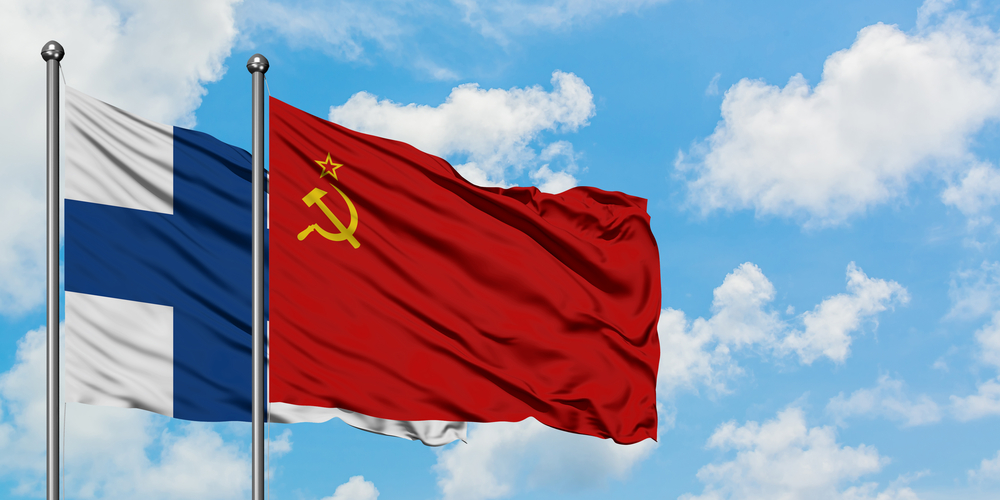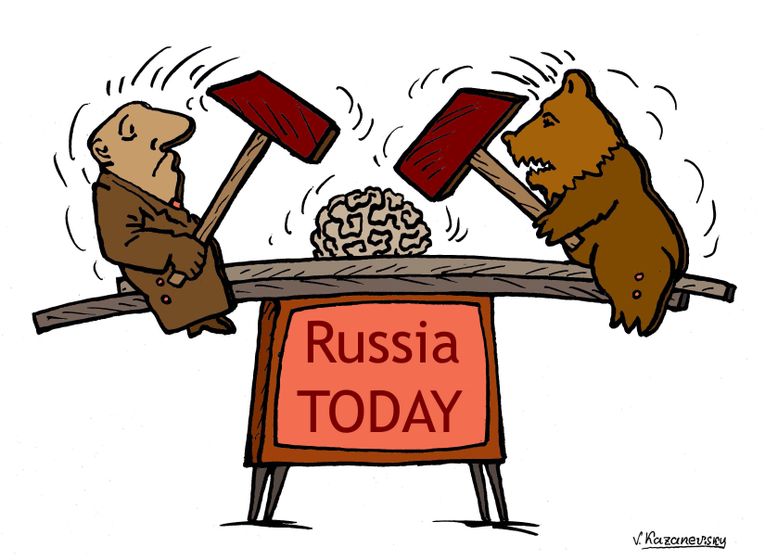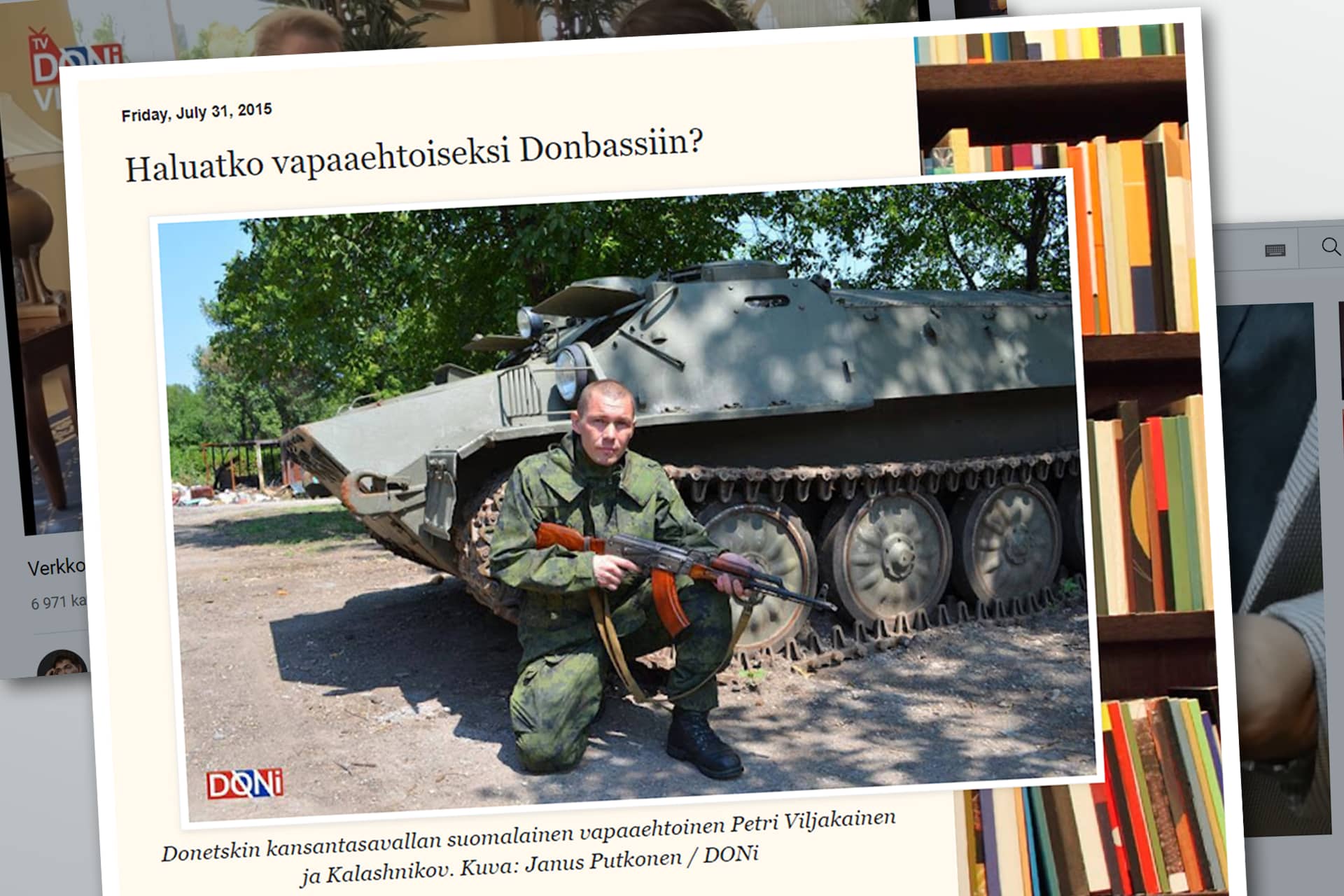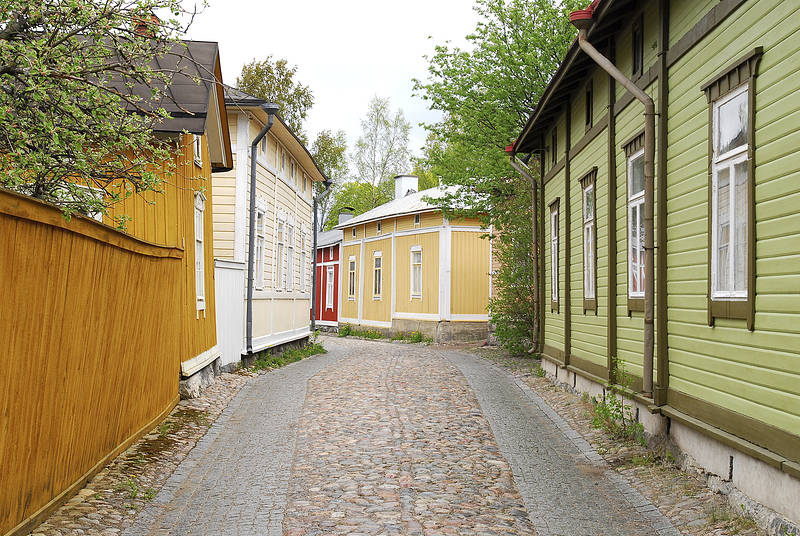Foreign policy analyst Pekka Virkki, one of Finland’s foremost experts on “Finlandization,” explains the phenomenon, its features, and why the idea of Ukraine’s “happy Finlandization” is inconceivable both practically and conceptually.
Finnish era of “Finlandization”
After the Second World War, Finland remained an “odd man out” on the European continent. Following the Hitler-Stalin Pact [also known as the Molotov-Ribbentrop Pact of 1939], the Soviet Union had attacked Finland. Western powers were prepared to support Finland’s struggle for independence after Finnish defense proved to be very successful despite being vastly outnumbered in terms of military might and other resources. However, the Western assistance mostly failed to arrive in time as the Finnish government deemed an unfavorable peace more preferable than the uncertainty of continuing the fight.
During a short truce, from 1940 onward, Finland turned its gaze towards Germany, yet maintained its democratic form of government and did not proactively seek to challenge the Western powers during the course of the great war. Fighting alongside Germany, Finland participated in military operations against the Soviet Union and regained the territories that Moscow had seized in the Winter War of 1939-1940. That being said, the depth of the alliance between Helsinki and Berlin is still a point of contention in academic and public debate.
Nevertheless, from the Soviet point of view, Finland had indeed been an ally of Nazi Germany, despite having been forced into the war in November 1939 as the target of Moscow’s aggression following the “false flag” operation in Mainila and the “request for assistance” from Moscow’s puppet “People’s Republic” in Terijoki. After the end of the war, the peace terms imposed on Finland included not only territorial concessions to the Soviet Union, but also changes in domestic policy, which were portrayed as prerequisites for the “fight against fascism.” In Finland’s so-called war-responsibility trials of 1945-1946, Finnish courts, contrary to the country’s constitutional principles, found its war-time state leaders guilty of “crimes” under retroactive legislation.
The politicians who pushed the court process forward also pushed through the Finno-Soviet “Agreement of Friendship, Cooperation, and Mutual Assistance” of 1948, also known as the YYA Treaty, which bound Finland to the Soviet sphere of influence. That said, Finland’s then-conservative president, Juho Kusti Paasikivi, deemed the treaty more favorable from Finland’s point of view than similar treaties that Moscow had forced on countries that it had occupied and later turned into communist dictatorships.
In the final analysis, the power of the YYA Treaty rested on Soviet military superiority in the Baltic Sea region. The treaty forced Finland to align its foreign policy — and increasingly its domestic policy as well — with Moscow’s strategic interests. The treaty turned into a canonical text, a “fatwa” of Finnish foreign policy, and its interpretation served as the basis of all major foreign policy disputes in the Finnish body politic.
At the same time, Finland managed to preserve most of the basic tenets of its Western model, which made the country rather unique in a sharply divided Europe. The Soviet Union lent support to Finnish Communists and their dreams of “revolution.” At the same time, over the course of several decades, various intelligence services of Eastern Bloc countries managed to extend their tentacles to all of Finland’s major parties, as well as to the country’s business circles, the media, and state and local administration. The fear of a communist revolution, the trauma caused by the Warsaw Pact occupation of Czechoslovakia, and the pursuit of self-interest led both big business and formerly pro-Western Social Democrats to serve Soviet interests in a variety of ways.
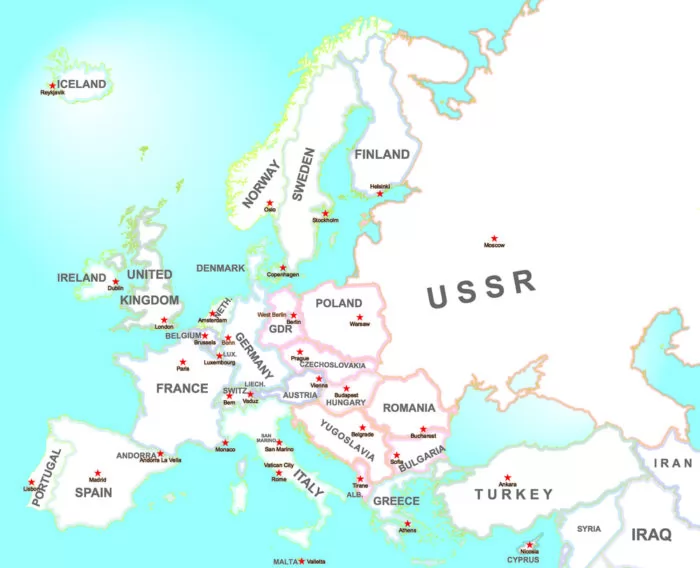
The politicized economic trade with the Soviet Union and other Eastern Bloc countries led to the country’s economic dependence and allowed Moscow to pursue its interests through Finnish membership in various international organizations. Moreover, the Soviet KGB exerted psychological and social control over many persons and entities in Finland. While the world was starkly divided ideologically, the parties to the great power competition still sought to follow some sort of rules to ensure at least a modicum of predictability in their foreign policy.
For example, Vladimir Pool, the former KGB deputy chief in Soviet Estonia, recounted how he had cooperated with the Finnish Security Intelligence Service (Supo) in monitoring the CoCom technology embargo on Eastern Bloc countries.
Stefan Widomski, Polish-born head of trade at Finnish technology group Nokia in the Eastern Bloc, worked for communist intelligence services under the code name “Subiekt” despite his close friendship with Hannu Moilanen, then head of counterintelligence at Supo.
Also, Soviet intelligence officers like Felix Karasev (Sutyrin) and Viktor Vladimirov did their utmost to meddle in Finnish politics. Vladimirov was a close friend of long-time Supo chief Seppo Tiitinen and reportedly in charge of the KGB’s assassination operations.
Moreover, Finland provided a platform for Soviet espionage operations deeper in the West. One apparent example was the case of Arne Treholt, a Norwegian civil servant convicted of spying for the Soviet Union, who used to meet with his KGB contact in Helsinki. Treholt’s verdict provoked a significant backlash from the Finnish political elite. Among others, the current Finnish Foreign Minister, Pekka Haavisto, protested against Treholt’s conviction. Immediately after his release from prison, Treholt moved to Moscow and has since focused on doing business in Cyprus, a favorite safe haven for many oligarchs and former intelligence officers who accumulated their wealth after the fall of the Soviet Union.
Period of post-finlandization
“Finlandization” ended after the collapse of the Soviet Union, at least in its prior form. On the one hand, Finnish foreign policy maintained a cautious attitude towards Russia, and Helsinki still refused to criticize Moscow’s actions as openly as many countries in the so-called Old West and especially those countries that had freed themselves from the yoke of Soviet imperialism in Central and Eastern Europe. On the other hand, Finland, while adopting a realist approach to geopolitics, constantly emphasized the rule-based order and promoted free trade, which benefited the Finnish economy and society greatly. Finland had pursued this “two-track” policy even before the fall of the Berlin wall.
After the end of the Cold War, the bipolar superpower competition was replaced by the doctrine of interdependence, “Wandel durch Handel” (change through trade), and blind belief in the benefits of technological development. The KGB and its “arne treholts,” including many in Finland, moved into business, which Russia began to instrumentalize as a means of political influence by the 2010s at the latest.
Russia’s new leadership desperately pursued advanced technology transfers and cultivated Western contacts to secure its newly-acquired wealth, and Finland was undoubtedly a great help in this endeavor. Finnish historian Juha-Matti Ritvanen has recalled contacts between Finnish President Mauno Koivisto and the Saint Petersburg city administration, then managed by Mayor Anatoly Sobchak and his trusted aide, one Vladimir Putin, in the late 1980s and early 1990s. Former Ambassador Hannu Himanen has stressed the need to study Finnish involvement in the scandalous oil-for-food scheme in Russia, which is often considered something of a starting point for Putin’s current kleptocratic system.
Finnish politics in the 1990s and subsequent decades were dominated by leaders like Tarja Halonen, Paavo Lipponen, Esko Aho, and Eero Heinäluoma. Halonen was President of Finland from 2000 to 2012, during which time any debate on possible Finnish membership of NATO was silenced. In tandem with then Foreign Minister Erkki Tuomioja, the President blocked the inclusion of binding security guarantees in the European Union’s Lisbon Treaty of 2007.
Paavo Lipponen and Esko Aho are both former prime ministers, and they have since joined the cohort of former European leaders who serve Russia’s political and economic interests: Lipponen is a consultant to the Russian gas pipeline project, Nord Stream, and Aho serves on the supervisory board of Russia’s state-owned Sberbank. Earlier, Aho was executive board chairman of Russia’s state-run Skolkovo Foundation. He ran for President in 2000, and is now reported to be vying for the position of the Finnish Center Party‘s presidential candidate once more.
Eero Heinäluoma, who has been awarded Russia’s Medal of Friendship by Vladimir Putin, is a former speaker of the Finnish parliament and now Member of the European Parliament. He likes to profile himself as an expert in foreign and security policy and often makes comments that are quite favorable to the Kremlin. Heinäluoma is known to have harbored presidential ambitions for a long time, and he has again been mentioned as a possible candidate for the Social Democratic Party in the presidential election in 2024.
Why is such a list of various players and their actions relevant in this context? Because they all have one common denominator: They were key contacts of Gerhard Maget, an officer in the East German state security service, Stasi, in Helsinki. Needless to say, the East German intelligence station in Helsinki closely coordinated its actions with the “fraternal service” of the Soviet Union, i.e., the KGB. Much less information is available on direct contacts that Finnish decision-makers had with the Soviet intelligence service, however.
European “finlandization”
The concept of “finlandization” contains many different, partly contradictory meanings and emphases. For some, it is a “survival story” of a small nation in a difficult geopolitical environment; for others, it is a time of self-censorship and mental genuflexion. In reality, the different stories are not mutually exclusive. Individuals and institutions had their own motives for their chosen course of action. However, it is undeniable that foreign policy and ties with the Soviet Union were used unscrupulously in the pursuit of political and economic gain in Finland during that period.
In central and western Europe, the concept of “finlandization” was used primarily to warn Germany (and later other Western-affiliated European countries) of what lay ahead if they moved towards disarmament and perhaps even renounced NATO membership. It is not a conspiracy theory that even during Mikhail Gorbachev‘s leadership, the Soviet Union still sought to “Finlandize” western Europe under the guise of superpower détente. The goal was to create an economic-political dependence that, combined with Moscow’s military superiority in the Eurasian continent, would ensure a US withdrawal from Europe and the dominance of the corrupt Soviet elite in eastern and perhaps in western Europe as well.
This ultimate strategic objective is very clear, for instance, in the ideas of Alexander Dugin, who is said to be one of the ideologues of the new imperialism of Putin’s Russia. The lucrative business deals of Russia’s “new nobility,” the so-called siloviki, politicians who emerged from the security services and the military, as well as their cooperation with European elites is much more than mere business. It is about the formation of a new continental “aristocracy” that the siloviki hope one day will lead to the severance of the transatlantic alliance and the decoupling of the liberal “Anglo-Saxon tandem” from its historical European partners.
Despite its ideologically consistent, although rather contradictory, transformation into a strategic ally of China, Russia has not necessarily abandoned its dream of “Finlandizing” Europe. That said, this dream is very much threatened by the European Union’s transformation into a geopolitical power committed to transatlanticism. This may be the reason also for Russia’s brutal military aggression against Ukraine. Were the transatlantic relationship severely disrupted after the 2024 US presidential election, for example, Russia could then use its military superiority to coerce Europe into “Finlandization” and carry out an “elite capture” throughout the continent.
“Finlandization” was undignified
The 2014 revolution in Ukraine is widely known in the West as “Euromaidan,” but a more descriptive name would perhaps be the one used by those who took part in those momentous events: “Revolution of Dignity.” It is only years later that the long-term impact of this historic event will begin to be understood.
Why do I say so? Because the people on the streets of Kyiv and other Ukrainian cities created the very new paradigm that Europeans, Americans, and their allies, confused by the end of the post-Cold War era, now use to define themselves and their actions. Ukrainians stood against Viktor Yanukovych‘s regime, which was pushing the country towards a form of government like Alyaksandr Lukashenka‘s dictatorship in Belarus, and towards a corrupt and oligarchic crony capitalism, the most vivid manifestation of which was political consultant Paul Manafort‘s operations in Ukraine and the US.
The popular revolution in Ukraine highlighted the very “triangle of negation” that was the focal point of the Biden administration’s anti-corruption strategy, which has already been called the new “Long Telegram” of the New Cold War era. The revolution accentuated the problems of oligarchic capitalism, political authoritarianism, and Western “crony capitalism,” and forced the West to address these problems on a global level.
At its best, the policy could seek to protect the nation and save face. However, Finland’s strategy during the Cold War was based on an emphasis on geopolitics and a careful disregard for systemic and ideological issues. “Finlandization” was organically linked to economic and political corruption, which was rampant within the upper strata of Finnish society, even while Finland remained a country imbued with a profoundly Protestant culture.
This was particularly so given that Russia sought to ensure the continuity of corrupt practices, using military force if needed. There are no signs that the Kremlin will drop this goal from its list of priorities any time soon, regardless of whether Ukraine joins any international organizations such as the EU or NATO.
New Cold War and “neo-Finlandization”
For the reasons stated above, it is no exaggeration to say that spring 2022 will determine the fate of Europe and the entire Western world. We can learn something about the changed reality by looking at what has changed in Finland, which gave its name to the concept of “Finlandization.”
In 2015, I published a book on “lustration,” aiming to raise public debate about the need for a systematic reassessment of Finland’s traumatic history of cooperation with Eastern Bloc intelligence services and its policy of self-censorship. I can safely say that, to a great extent, this goal has indeed been achieved.
Finland’s foreign and security policy has changed since 2014 during Sauli Niinistö‘s presidency. Since the President’s latest New Year’s address, opposition to NATO membership has dropped to a record low, and polls suggest that well over half of Finnish voters may be in favor of applying for membership in the defense alliance within a certain period of time.
Having developed its military cooperation and intelligence capabilities, Finland has become much more clearly part of the Western defense infrastructure in the Baltic Sea region. This is largely due to a change in the role of the European Union and is reflected in Finland’s position, partly through the EU effectively being the sanctions coordinator of the transatlantic alliance. We have come a long way from when Paavo Lipponen, who was regarded as one of Finland’s leading pro-European politicians, pushed the Nord Stream gas pipeline project as part of a strategic effort to “tie Russia to Europe,” or when Foreign Minister Erkki Tuomioja entered a dissenting opinion to the minutes of a government meeting in 2014, suggesting that Finland reserve the right to opt-out of EU sanctions against Russia unilaterally.
In a recent article, Matti Pesu, Senior Research Fellow at the Finnish Institute of International Affairs, concluded that Finland was already “aligned but not allied” with NATO. Similarly, Finnish state leaders have made it clear that Finland will stand firmly behind EU sanctions on Russia if Moscow escalates the war against Ukraine. Also, the recent election of the new chairman of the Foreign Affairs Committee of the Finnish Parliament attracted considerable attention: Jussi Halla-aho has lived in Ukraine, speaks fluent Ukrainian, and has been in favor of applying for NATO membership for decades, although his own party, the Finns Party, which he led for four years, has an ambiguous position on the question.
Those who advocate for the “Finlandization” of Ukraine should decide whether they wish for the Ukrainian government to choose a path of “Finlandization” as manifested during the Cold War, — which in practice is impossible to implement in today’s world, — or whether they foresee a path similar to the one that Finland is taking during this New Cold War, which aims to secure Finland’s independent nationhood, decent living conditions, and cultural uniqueness. I think Ukraine — just like Finland — would be best served by forging an unambiguous alliance with like-minded, democratic states governed by the rule of law. This would put an end to the endless speculation about Ukraine’s status and prevent it from being used as a hapless pawn in transnational corruption.
Read More:
- Lustration in Finland? Explaining the issue
- Macron in Kyiv denies discussing “Finlandization” of Ukraine with Putin
- Moscow analyst: the Kremlin won’t accept Finlandization of Ukraine
- The myth of the “Finlandization” of Ukraine
- Coercing Ukraine into neutrality: the politics behind Russia’s military threat to Ukraine
- Some 20 Finns fought against Ukraine in Donbas, facing no consequences in Finland – media
- Not everyone in the USSR supported the 1939 invasion of Finland, KGB archives show
- Did a Ukrainian unit really come to the aid of Finland in the Winter War?
- When the League of Nations expelled the USSR for bombing Finland
- Russian propaganda in Montenegro, Sweden, and Finland – and how they’re fighting back
- Shmulyevich: Putin to reprise Stalin’s Winter War in Finland strategy against Ukraine




